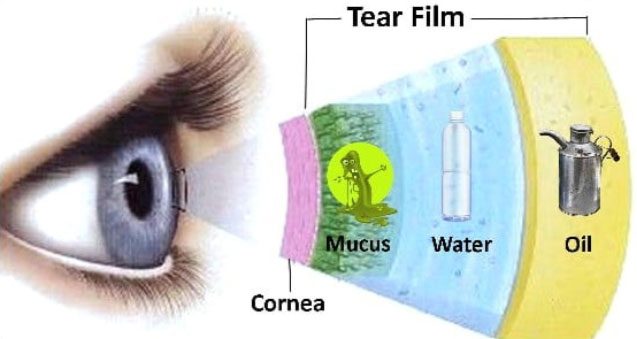Dry Eyes
The eye is a naked organ used to absorb and process light signals. It needs to remain moist and clean.
Your body makes three types of tears:
- Basal tears are in your eyes all the time to lubricate, nourish and protect your cornea. Basal tears act as a constant shield between the eye and the rest of the world, keeping dirt and debris away.
- Reflex tears are formed when your eyes need to wash away harmful irritants, such as smoke, foreign bodies, or onion fumes. Your eyes release them in larger amounts than basal tears, and they may contain more antibodies to help fight bacteria.
- Emotional tears are produced in response to joy, sadness, fear, and other emotional states.
Tears are not just saline. They have a similar structure to saliva and contain enzymes, lipids, metabolites, and electrolytes. Each tear has three layers:
- An inner mucus layer that keeps the whole tear fastened to the eye.
- A watery middle layer (the thickest layer) to keep the eye hydrated, repel bacteria and protect the cornea.
- An outer oily layer to keep the surface of the tear smooth for the eye to see through, and to prevent the other layers from evaporating.

A dry eye may be attributed:
- Environmental factors: Dust, wind, pollen, heat, air-conditioning, excessive electronic device usage.
- Age: With time, our eyes produce less tears exposing our eye to the atmosphere and causing symptoms.
- Hormonal: Pregnancy and menopause, in particular, can cause dry eyes
- Medication: Certain medications can cause dryness to the tear film
- Systemic Conditions: Certain autoimmune conditions can change the quality of the tear film leading to symptoms.